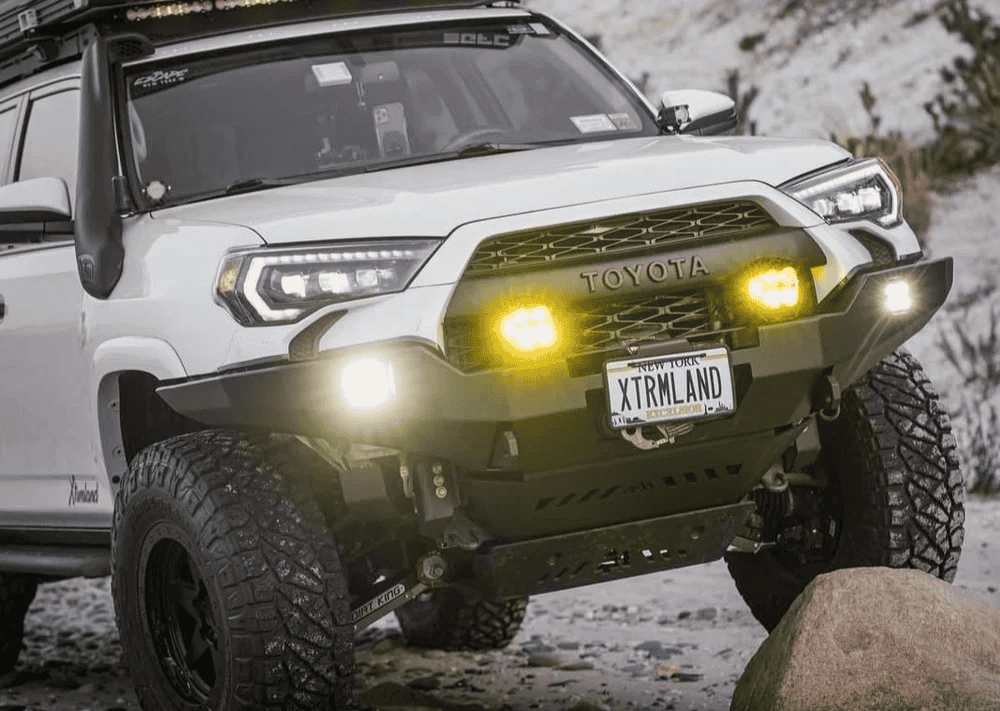Overland Vehicles

A reinforced chassis upgrade increases structural capacity where real world loads concentrate. Frames flex in bending and twist under torsion whenever you brake, corner, or hit uneven terrain. Over time, repeated stress cycles can create fatigue cracks near holes, weld toes, brackets, and spring mounts. Reinforcement reduces strain at these hot spots and distributes loads through stronger paths.
It is not only about raw strength. Improved torsional rigidity can sharpen steering response, reduce body shake, and keep suspension geometry consistent over rough surfaces. For tow rigs, stiffer frames help stabilize trailers by limiting yaw and roll inputs. For overland vehicles, added rigidity protects the shell, cabinets, and roof equipment from constant vibration on washboard roads.
Know the limits. Reinforcement does not change the legal GVWR or tow rating. These are set by the manufacturer and tied to brakes, axles, cooling, and validation testing. Upgrades should aim for durability and control, not a new weight class. A good baseline is to first estimate payload, tongue weight, and dynamic loads, then design reinforcement to keep stresses within safe margins.
Many assume thicker plates everywhere always help. In reality, poorly placed plates can create stress risers. The goal is smooth load transfer, not random thickness. Another myth is that reinforcement alone cures sway. Often the cure is a tuned system that includes springs, dampers, tires, and alignment.
The best reinforced chassis upgrade starts with targeted geometry. Boxing converts an open C channel into a closed section, which significantly boosts torsional stiffness. Plating thickens high stress zones around steering boxes, shock towers, and link mounts. New or larger crossmembers reduce span length, cut deflection, and improve driveline alignment. Gussets support brackets and distribute loads into the parent frame.
Material selection matters. Mild steel is common for compatibility and ease of welding. Higher strength steel can allow thinner sections, but it demands precise weld procedures and heat control. Match plate thickness to the parent rail to avoid sharp stiffness jumps. When possible, bevel and fishmouth plates so they blend into the frame rather than end abruptly.
Welding and bolting both have roles. Welded joints provide continuity and stiffness, ideal for boxing and integrated crossmembers. Bolted solutions simplify serviceability and reduce heat input near sensitive areas like fuel lines or electronics. Where hardware is used, select graded fasteners, use correct torque, and consider thread locker or prevailing nuts. Always prep surfaces by removing coatings and contamination before joining.
Corrosion protection is part of the upgrade, not an afterthought. After welding, dress sharp transitions, clean thoroughly, apply a zinc rich base, and top coat with a durable finish. Cavity wax inside boxed sections helps prevent internal rust. Add drain paths where water could pool, and ensure mud cannot pack against hidden plates.
Reinforcement should work with suspension, not against it. Maintain correct shock motion ratios, bump and droop clearances, and link geometry. Consider how added stiffness will change the load seen by bushings and mounts. If you move a crossmember or add plating near a spring pocket, revisit alignment specs and steering stops.
Start with a load case map. Include curb weight, passenger and cargo distribution, hitch forces, and dynamic spikes from braking, potholes, and off road impacts. Use that map to prioritize zones: steering gear, front horns, transmission crossmember, rear spring mounts, and any points that showed cracks or deflection in inspection. Reinforce the path between these nodes rather than isolated patches.
Mind service access. Leave room for oil filters, drain plugs, and driveline removal. Add access holes or nutserts where future maintenance is expected. Heat management also matters. Keep reinforcements clear of exhaust expansion paths and use shields if temperatures rise near new plates.
Upgrades should respect legal ratings and safety. Reinforcing a frame without addressing brakes, cooling, and tires will not create a safe higher capacity rig. After installation, perform a thorough inspection. Check torque on all hardware after the first few hundred miles. For critical welds, consider dye penetrant inspection to spot surface cracks. Finally, align the vehicle, verify steering centering, and test for vibrations at highway speed.
For drivers planning remote travel, an engineered reinforcement is a key step in a complete system. Pair structure with appropriate suspension, gearing, armor, and recovery points, and you get control that lasts through long miles and rough tracks. If your goal is a purpose built overland or tow platform, a professional design process keeps every change working in harmony.
OZK builds are planned as systems. From layout to metalwork, our team designs reinforcement to fit your use case, then integrates it with suspension, power, and interior. Explore our Overland rigs to see how structure, ride quality, and reliability come together for trail and highway.
When you want a bespoke package, our Custom overland upfit process can include chassis plating, crossmember design, and bracket fabrication matched to your payload and travel style. Curious about our approach, materials, and customer care from handoff to first trip? Read more at Why choose OZK Customs.
Bring us your route map, gear list, and towing plans. We will translate that into a reinforcement strategy that protects the frame, sharpens handling, and makes every mile quieter and more controlled. Tell us how you drive, and we will build the backbone to match.
Ready to engineer strength where it matters most? Tell us how you tow, travel, and carry gear, and we will spec a reinforcement plan with suspension, power, and protection that works as one system. Submit your build goals and get a tailored roadmap from OZK—designed, fabricated, and tested for the way you drive.
ADDRESS:
6159 E Huntsville Rd, Fayetteville, AR 72701
PHONE:
(479) 326-9200
EMAIL:
info@ozkvans.com